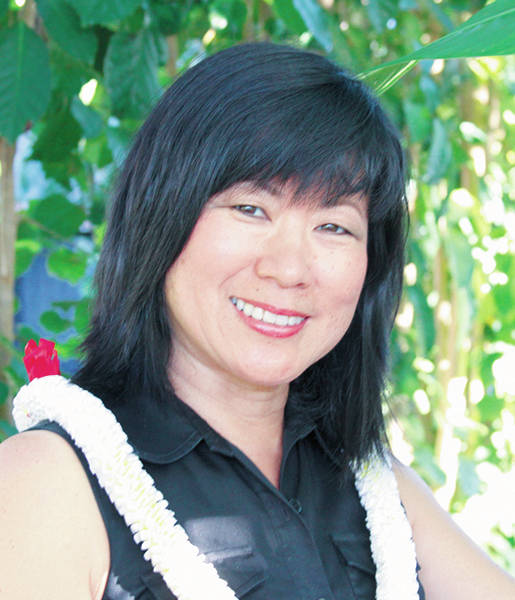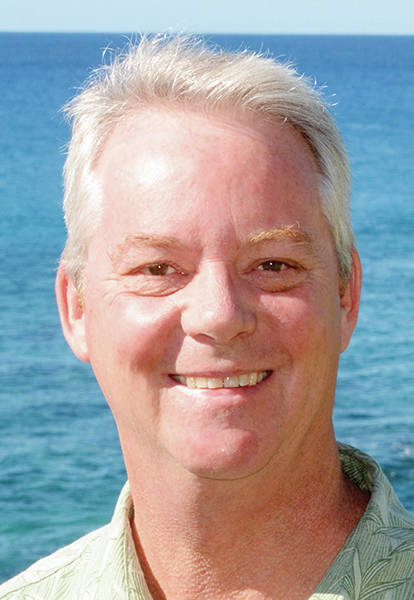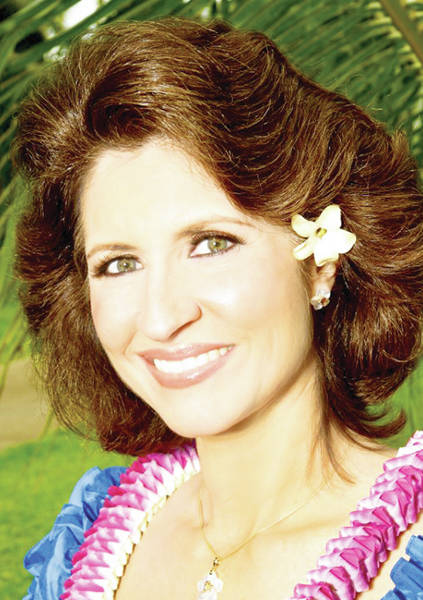Tourist destinations around the world are reacting to growing numbers of visitors adding to congestion, increasing costs of living and disrupting fragile ecosystems.
“This is our state’s largest industry, so we have to do a better job of addressing our parks, traffic and safety,” said Rep. Nadine Nakamura.
Some travel destinations are looking closely for ways to solve issues of massive traffic jams, creaking infrastructure, environmental degradation and rising rents.
In 2017, police advised visitors to stay away from Scotland’s second-largest island, Isle of Skye, due to noise complaints, overcrowding and visitors urinating in public.
In Spain, Barcelona’s government passed a law to limit tourist beds after anti-tourist graffiti and protests of services like Airbnb that sent rents soaring and forced residents from homes.
Dubrovnik, Croatia, is capping the number of visitors at 4,000 a day and cutting the number of cruise ships entering the ancient port. Visitors to Santorini, Greece, have been capped to 8,000 a day by the island’s mayor in 2017 with a rising population. Other destinations like Bhutan and Nepal are minimizing environmental impacts by charging daily fees and implementing permit guidelines and restrictions.
The Hawaii Tourism Authority is projecting a 40 percent increase in air seats this year, so tourism impacts on Kauai may also increase. However, the 6,500-foot Lihue Airport runway limits larger international aircraft and numbers of seats.
“I don’t think we need to extend our runway,” said Jim Braman, general manager for The Cliffs at Princeville and Kauai chapter chair for the Hawaii Lodging and Tourism Association (HLTA). “Kauai’s niche is that we’re the rural getaway kind of place, and we need to keep it that way. So I would never advocate for direct Japan flights. We’re looking at who can we talk to about the number of flights, and that’s controlled by the state and the feds.”
Other board members agreed it is also important to schedule flight arrivals and departures when local traffic is not heaviest during work commute and school zone times.
“If we coordinated flight times with resident travel patterns, we could do probably quite a bit to save some congestion,” Braman said. “Reaching out to people in places that have had tourism issues and dealt with them successfully is probably one of the biggest things we can do.”
The No. 1 priority of the Kauai Tourism Strategic Plan Update Fiscal Year 2016-18 is to support traffic management systems to reduce congestion and improve safety by developing feeder roads, improving street design, developing transportation service from the airport to resorts, and creating pedestrian networks. In order to accomplish this, the current plan advocates for lifting the cap on existing Transient Accommodation Tax funds, increasing the allocation to Kauai for improvement in services and infrastructure.
“We already, as a visitor industry, provide $300 million to the state,” said HLTA board member Denise Wardlow. “Kauai residents need to push our state legislators to improve our highways.”
Of the 80,000 registered vehicles on island, nearly 12,000 are rental cars. Over the last few years, two North Shore shuttle pilots had proved somewhat unsuccessful in alleviating traffic congestion.
“It wasn’t successful to carry on, because when they have the choice of driving their car versus riding a shuttle, they’re going to drive their car,” said Sue Kanoho, executive director at Kauai Visitors Bureau. “It did work well, actually, for some residents.”
According to Kanoho, a Haena master plan is scheduled to go before the Department of Land and Natural Resources to request limits on visitors to Ke’e Beach, requiring reservations with fees and permits.
Nakamura is also working with a group focusing on visitor impacts at Haena State Park, especially illegal parking on the state highway never intended to accommodate 2,000 visitors a day. She introduced a bill to create a surcharge that would go to county law enforcement and another bill to increase rental car fees for highway improvements and public transit.
While the bill did not survive, the concept was included in another bill that is moving forward.
“The state should partner with the counties and visitor industry to address visitor impacts,” Nakamura said. “Only when all stakeholders come together will we be able to address the most pressing problems and come up with solutions.”
Kauai’s population of 72,000 residents may also increase with growing demands from the tourism industry plus visitors wishing to relocate.
“Our average daily census was for the year was 26,275 visitors,” Kanoho said. “We need to look at the island as a whole and not just blame the visitor industry for all the challenges that we’re dealing with.”
Visitor units for 2017 on Kauai totaled 8,821 for condos, hotels, vacation rentals and timeshares.
“I have 173 two-bedroom units, and we can rent them out separately,” said Wardlow, general manager of Westin Princeville Ocean Villas, which is currently at maximum capacity. “A lot of the major resorts have a sustainability program, whether it’s recycling or saving on utilities and water. … We recycle all of our bottles and use all the money to give back to the community through charities.”
Like other eco-conscientious hotels, Westin has plans to install fountains to refill water bottles and implement methods to limit generation of waste through recycling and composting. The hotel also continues education efforts with compendiums and videos addressing the importance of safety from hazards of swimming, hiking, driving and emergency situations.
In order to counter some of the negative effects of tourism, a combined effort must take place with many partners, including issues of noise pollution and drunken behavior that require action from law enforcement.
“Our leaders recognize it and are trying to put regulations in place, but if you can’t enforce it regulation means nothing,” Wardlow said. “Most important to us is ensuring that our visitors have a positive experience. And we do recognize at a certain point, that’s not going to happen anymore.”
Preserving Kauai’s unique cultural identity is another important issue, and some tourist venues are already working closely with organizations, such as Waipa Foundation and Kauai Museum, to perpetuate the island’s heritage.
“Tourism is good for our island,” said Dr. Gordon LaBedz, vice chair of the local Surfrider Foundation chapter. “Agriculture is extremely destructive and polluting. Farming, with its large scale destruction of nature, its chemicals and its machinery is far more destructive than Hawaii’s tourism.”
“Eco-voluntourism” is another concept that encourages visitors to care for the island’s ecosystems, through organizations like Malama Kauai and future coordination with Parks and Recreation and Department of Land and Natural Resources.
“At least with tourism, there should be an incentive to keep the place looking beautiful and protecting nature,” LaBedz said.
Homegrown initiatives to protect fragile ecosystems, like coral reefs, and threatened species, like monk seals, are taking place from community organizations with residents talking and posting signs to educate visitors of non-toxic sunscreen, to prevent damage from walking on reefs and to give wildlife adequate space.
“When visitors have a good experience, they return and they tell their friends,” LaBedz said. “If they are caught in traffic all day, if the restaurants are lousy, if they are brushed off by rude employees, they won’t return. We all have an incentive to make the visitors happy. Employment here is driven by tourism.”
A “Responsible Tourism” presentation will take place on March 15, hosted by Kauai Visitors Bureau, along with the County of Kauai, Kauai Chamber of Commerce and Kauai Economic Development Board.
The expert speaker will be Olof Yrr Altadottir, former director general of the Icelandic Tourist Board and past vice president of the European Travel Commission.
“Tourism has opportunities that are far reaching, and yet we understand economic diversification too,” Kanoho said.





Good article with good summary of a VERY important subject best discussed thoroughly with as much objective information, as the numbers in this article, as can be determined by careful analysis.
The time to deal with this overcrowding is ASAP, and the way to deal with it is with as much input from all residents currently living here, as well as visitor opinions.
The county I was born in had 3,000 residents and approx 5,000 ”seasonal visitors” in 1944; now, the residents number approx 700,000 and the visitors likely twice that per year, and it is a mess. A major traffic mess every day, and an ongoing environmental mess constantly, with all the coral reefs gone, most of the bays and bayous seriously polluted, all the crabs and shrimps way out in the ocean from those bays, etc., etc.
Good Luck and God Bless ALL of We the People willing and able to put time and energy into developing a fair and equitable plan for going forward.
Thank you.
More blah blah blah blah
ALOHA on island, 1) limit rental car fleets!!!! 12,000 to 6,000… do traffic flow studies… 2.) compare to the number of rental car rentals over the same period and accordingly limit how many rental cars are allowed to be rented at any one time… can also gauge impact to economy and adjust accordingly… then create trolley system… tourists dont want to ride on our buses or closed air shuttles… got to make it novel… also… we advise them on ocean related safety measures while they wait for their bags at the airport. lets see videos on their impact to the island regarding trash, plastic, SUNSCREEN on our reef, and im sure many will try to lessen impact and pay more respect to the aina.. with all of the tourist money, we cant even seem to fix our roads?
honestly none of this is rocket science… jit speaks volumes that this article reports on the REAL working solutions being taken by community, business, and organizations w a vision for sustainability… just weak backchannel leadership w archaic views and tired solutions… we see where thats going…
OR WE COULD JUST TELL TOURISTS THE TRUTH: “Between December 2013 and July 2015, according to an independent and neutral fact-finding task force formed by the Kauai County mayor and the State Department of Agriculture, companies sprayed 18 tons of acutely toxic “restricted-use” pesticides on Kauai. Six of the seven restricted-use pesticides are suspected of being endocrine disruptors, which means they may cause sexual development defects in humans and animals, according to the Environmental Protection Agency. Four are suspected carcinogens. And between them, the seven have been linked to, among other things, neurological and brain problems and damage to the lungs, heart, kidneys, adrenal glands, central nervous system, muscles, spleen, and liver. These are only the most toxic of the lot. Studies show that companies use the highly toxic “restricted-use” pesticides on experimental plots at 17 times the rate of farmers on traditional fields. ” COME VISIT!!
Are the173 two bedroom units at the Westin Princeville supposed to be rented individually as one bedrooms causing too many units then zonning allows, similar to the HBR situation? Ka Haku and Willie Rd has become a dangerous intersection.
The good news regarding HBR splitting units is that soon they no longer will be. With the opening of Happy Talk, parking has become a real issue which will worsen if Bali Hai ever reopens with their increased seating capacity.
As a fairly frequent visitor to Kauai, I have noted, over the last ten years, that my quaint island paradise has turned into a road nightmare. The corridor flowing through Kappa and Lihue has become almost impassible during the day. I know the river prevents the creation of a bypass road around these two locations but something really needs to be done to correct the massive bottleneck. Going from the North Shore to the South Shore takes several hours and wastes a tremendous amount of fuel and personal energy. Just my thoughts, something has to be done to correct the traffic flow.
“My” quaint Islas says a visitor. This is where the problems start!
Island**
Sure installing fountains to refill plastic water bottles is great, but this visitor build up has bigger ramifications for the island and residents than these token fixes.
Back in the mid 80’s our population was about 30K if I remember right. Our visitor number ratio was about 1 to 4 during peak season and stayed that way for years. Now it’s more than 1 to 3 for the daily average, not just peak season. The visitor population is growing at a higher rate than our population.
No one is saying we don’t need or want some tourism but not this much. All the shuttles and traffic circles in the world will not give us room at our beaches and on the trails. And not on our clogged roads. To mitigate traffic even partially, will take tax money and lots of it.
We continue allowing advertising for more and more visitors by the HTA. There was no mention or justification of that in this article.
Bad Traffic. Will not come back
We have over 26,000 visitors per day on average. There is no room to drive, no room to park at the beaches and packed trails but we continue having the Hawaiian Tourism Authority promote the islands though we are on overload? The transient tax should be put to use keeping up with their wear and tear. Visitors are not going to stop arriving. We are wasting money that tax money. It does not make sense.
THANK YOU JIM BRAMAN FOR YOUR VOICE AND KEEPING KAUAI REAL!!
Can’t decide between Feast or Famine?
What would be the standard length of a runway? 12,000 ft. or 16,000 ft. It will run off the cliffs if they add any more runway.
As a yearly visitor to Kauai, I follow the on-going discussion of increasing traffic and the proposition that increasing tourism is causing the increasing traffic. The article states that there are 80,000 registered vehicles on Kauai and of that number, 12,000 are rental cars. That leaves 68,000 registered vehicles for residents. Using data from surbanstats.org, the total population of Kauai in 2017 was approximately 67,000. With 12,000 of the 67,000 under 15 years old, that leaves approximately 55,000 candidate drivers for the 68,000 registered vehicles. If these numbers are accurate, the largest contribution to the traffic are vehicles driven by residents as they go to and from work, run errands, and other activities. Tourism is an essential “industry” for Kauai and without tourists, and the money they spend when staying on Kauai, many residents would struggle with reduced income. Capping the number of facilities where tourists can stay (hotel rooms, condos, vacation rental houses, etc) would manage the number of tourists in a predictable way. But a more important objective should be the improvement of the road and highway infrastructure which would benefit residents more than tourists.